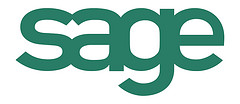
Driving your own car for business purposes can end up being incredibly expensive! After all, by the time you factor in your fuel costs, as well as the wear and tear on your car, it can quickly leave a hole in your pocket.
The good news is that, as with other expenses, there are several rules that have been put in place by HMRC to ensure that you are able to claim business mileage. After all, many of us make a number of daily journeys as part of our everyday job, and company mileage allowances often get overlooked.
Get A Free Quote
We believe in working with our clients to make accountancy services easy. Get year-end accounts, CT600 corporation tax, payroll, bookkeeping and management accounts made easy.
If you are looking to learn more about business mileage rates and what you are entitled to, you have certainly landed in the right place. We have created a helpful guide outlining everything that you need to know.
First and foremost, what are Mileage Allowance Payments?
Mileage Allowance Payments, also known as MAPs are what businesses pay employees for using their own vehicle for business journeys such as meetings, conferences and networking events. The HMRC publishes Mileage Allowance Payment rates, that outline how much you can be reimbursed for your business motoring costs, without having to pay any tax.
Each year, under HMRC rules, you can pay your employee a certain number of MAPs, without having to report this to HMRC. This is known as an ‘approved amount’ and you can calculate this amount by multiplying your employee’s business travel miles for the year by the rate per mile for their vehicle.
If you’re struggling to work this out, you can use HMRC’s MAPs working sheet which is available to access online. Known as aP11D WS6, you will be able to work out the cash equivalent of providing mileage allowance to an employee or director within your business using this form.
HMRC provide an example online outlining a typical mileage claim. They use the following example:
Your employee travels 12,000 business miles in their car – the approved amount for the year would be £5,000 (10,000 x 45p plus 2,000 x 25p).
And, if your employee users more than one vehicle, all of the miles are still calculated all together.
What happens if the amount is above the approved amount?
If you do your calculations and discover that the amount is above the ‘approved amount’ you must provide the following information according to HMRC.
- Report on form P11D
- Add anything above the ‘approved amount’ to the employee’s pay, and deduct and pay tax as normal
- Anything below the ‘approved amount’
Why choose React Accountancy?
Here at React Accountancy, we provide trusted accountancy services to start-up, established and multi-national businesses across a diverse range of industries.
From the moment you get in touch, our approachable, friendly and professional team will go above and beyond to ensure that you receive the right advice, support and accountancy solutions for your business.
All of our team has years of experience in providing accountancy services that support your business including complex financial issues.
Get in touch today for further information about any of our services.
You can reach us on 01914324110 or contact us via email using info@reactaccountancy.co.uk
Get A Free Quote
We believe in working with our clients to make accountancy services easy. Get year-end accounts, CT600 corporation tax, payroll, bookkeeping and management accounts made easy.




